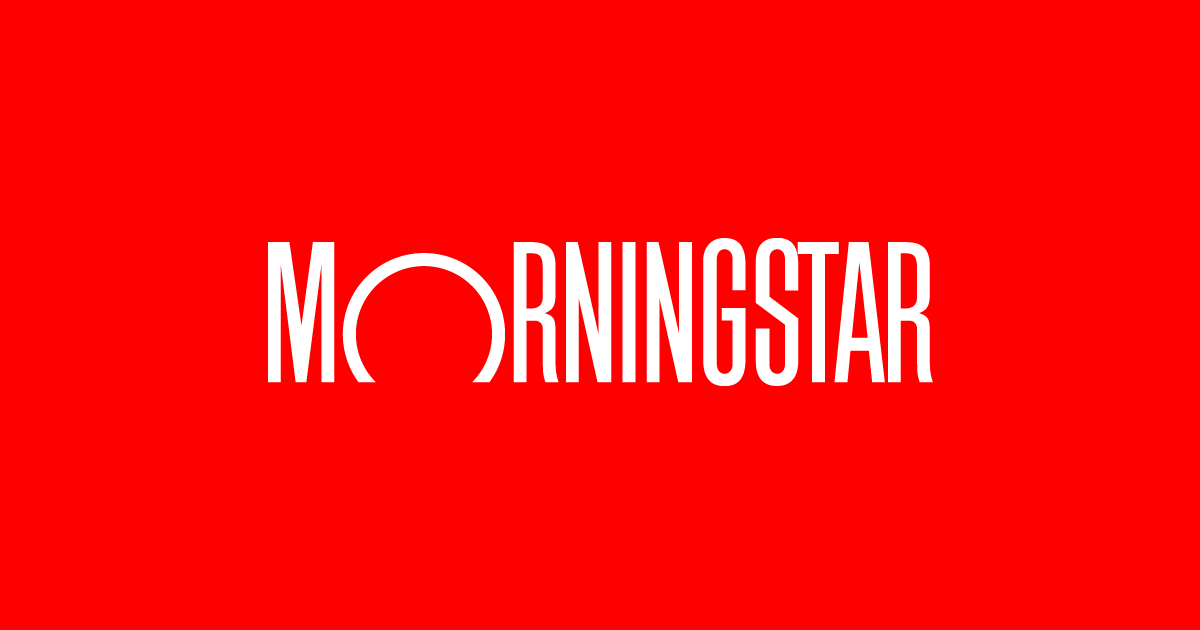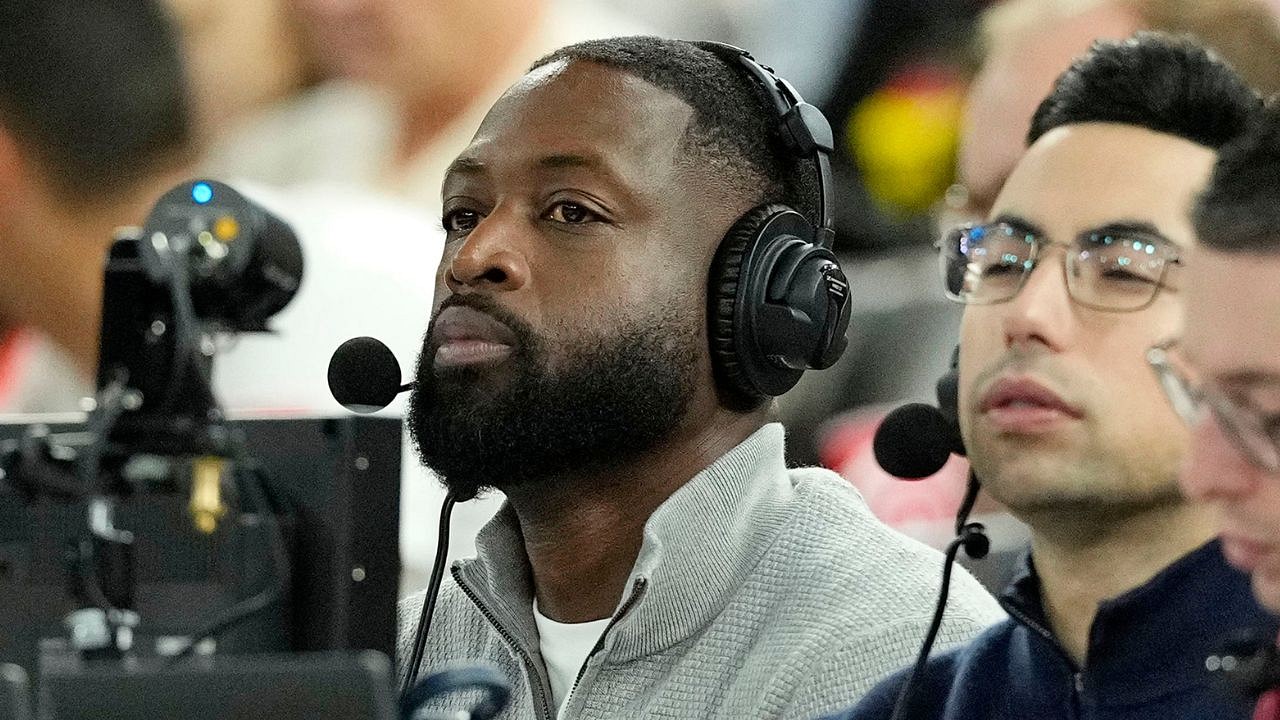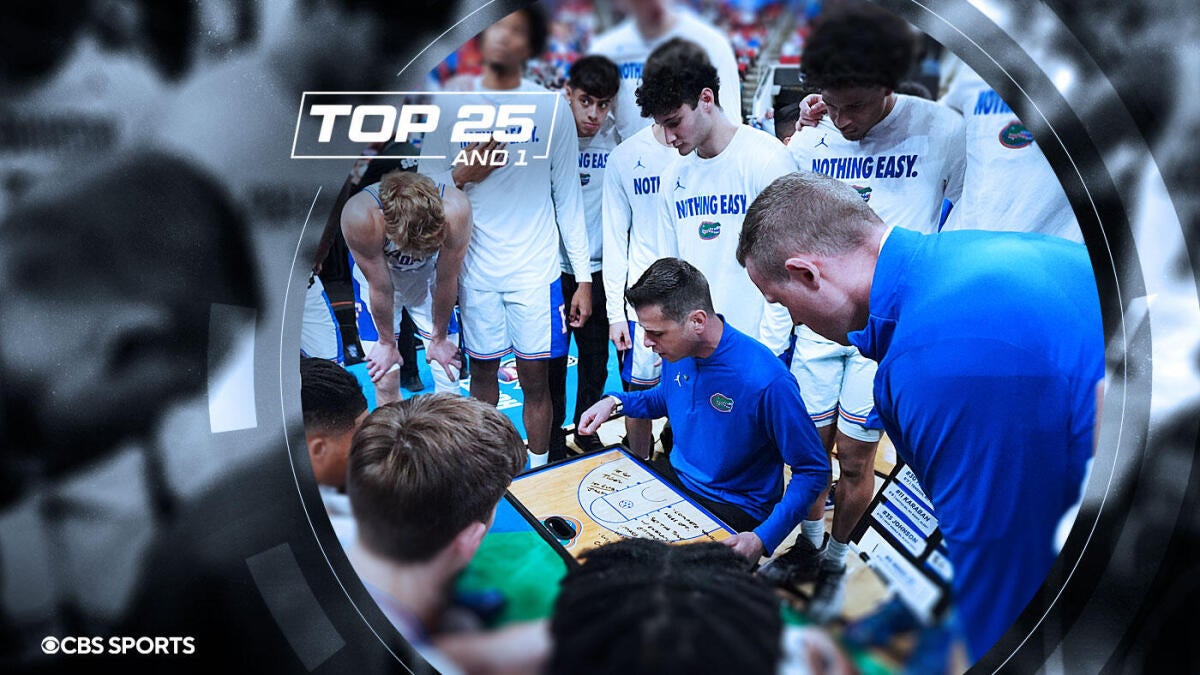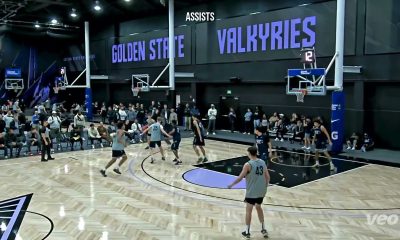1
Houston
This ranking is based on the Cougars returning three of the top seven scorers — specifically Emanuel Sharp, Milos Uzan and Joseph Tugler — from a team that finished 35-5 and advanced to the championship game of the 2025 NCAA Tournament. That core will be joined by a recruiting class highlighted by Creighton transfer Pop Isaacs, Sam Houston transfer Kalifa Sakho, five-star freshman Chris Cenac Jr. and four-star freshmen Isiah Harwell and Kingston Flemings.
—
35-5
2
St. John’s
This ranking is based on the Red Storm returning one of the top two scorers — specifically Zuby Ejiofor — from a team that finished 31-5 and advanced to the second round of the 2025 NCAA Tournament. That core will be joined by a recruiting class highlighted by North Carolina transfer Ian Jackson, Providence transfer Bryce Hopkins, Arizona State transfer Joson Sanon, Cincinnati transfer Dillon Mitchell, Stanford transfer Oziyah Sellers, Idaho State transfer Dylan Darling, NAIA transfer Handje Tamba, international prospect Imran Suljanovic and four-star freshman Kelvin Odih.
—
31-5
3
BYU
This ranking is based on the Cougars returning four of the top 10 scorers — specifically Richie Saunders, Dawson Baker, Keba Keita and Mihailo Boskovic — from a team that finished 26-10 and advanced to the Sweet 16 of the 2025 NCAA Tournament. That core will be joined by a recruiting class highlighted by Baylor transfer Robert Wright, Southern Illinois transfer Kennard Davis, UC Riverside transfer Nate Pickens, Washington transfer Dominique Diomande, Idaho transfer Tyler Mrus, five-star freshman AJ Dybantsa and four-star freshman Xavion Staton.
—
26-10
4
Purdue
This ranking is based on the Boilermakers returning five of the top six scorers – specifically Trey Kaufman-Renn, Braden Smith, Fletcher Loyer, Daniel Jacobsen and C.J. Cox – from a team that finished 24-12 and advanced to the Sweet 16 of the 2025 NCAA Tournament. That core will be joined by a recruiting class highlighted by South Dakota State transfer Oscar Cluff, North Florida transfer Liam Murphy and international prospect Omer Mayer.
—
24-12
5
UConn
This ranking is based on the Huskies returning four of the top seven scorers — specifically Solo Ball, Alex Karaban, Tarris Reed and Jaylin Stewart — from a team that finished 24-11 and advanced to the second round of the 2025 NCAA Tournament. That core will be joined by a recruiting class highlighted by Georgia transfer Silas Demary Jr., Dayton transfer Malachi Smith, five-star freshman Braylon Mullins, four-star freshman Eric Reibe and three-star freshman Jacob Ross.
—
24-11
6
Florida
This ranking is based on the Gators returning five of the top 10 scorers – specifically Alex Condon, Thomas Haugh, Rueben Chinyelu, Urban Klavzar and Micah Handlogten – from a team that finished 36-4 and won the 2025 NCAA Tournament. That core will be joined by a recruiting class highlighted by Princeton transfer Xaivian Lee, Arkansas transfer Boogie Fland and four-star freshmen CJ Ingram and Alex Lloyd.
9
36-4
7
Texas Tech
This ranking is based on the Red Raiders returning two of the top four scorers — specifically JT Toppin and Christian Anderson — from a team that finished 28-9 and advanced to the Elite Eight of the 2025 NCAA Tournament. That core will be joined by Washington State transfer LeJuan Watts, UNC Greensboro transfer Donovan Atwell, Villanova transfer Josiah Moseley, VCU transfer Luke Bamgboye and redshirt freshmen Marial Akuentok.
1
28-9
8
Michigan
This ranking is based on the Wolverines returning three of the top eight scorers — specifically Roddy Gayle Jr., Nimari Burnett and L.J. Cason — from a team that finished 27-10 and advanced to the Sweet 16 of the 2025 NCAA Tournament. That core will be joined by a recruiting class highlighted by UAB transfer Yaxel Lendeborg, Illinois transfer Morez Johnson Jr., North Carolina transfer Elliot Cadeau, UCLA transfer Aday Mara and four-star freshmen Trey McKenney and Winters Grady.
1
27-10
9
Duke
This ranking is based on the Blue Devils returning three of the top nine scorers — specifically Isaiah Evans, Caleb Foster and Patrick Ngongba — from a team that finished 35-4 and advanced to the Final Four of the 2025 NCAA Tournament. That core will be joined by a recruiting class highlighted by Washington State transfer Cedric Coward, Rice transfer Ifeanyi Ufochukwu, five-star freshman Cameron Boozer, and four-star freshmen Nikolas Khamenia and Cayden Boozer.
1
35-4
10
UCLA
This ranking is based on the Bruins returning three of the top four scorers – specifically Tyler Bilodeau, Eric Dailey Jr. and Skyy Clark – from a team that finished 23-11 and advanced to the second round of the 2025 NCAA Tournament. That core will be joined by a recruiting class featuring New Mexico transfer Donovan Dent, Michigan State transfer Xavier Booker, Kansas City transfer Jamar Brown, San Diego transfer Steven Jamerson and North Carolina Central transfer Anthony Peoples Jr.
1
23-11
11
Arizona
This ranking is based on the Wildcats returning four of the top eight scorers — specifically Jaden Bradley, Tobe Awaka, Motiejus Krivas and Anthony Dell’Orso — from a team that finished 24-13 and advanced to the Sweet 16 of the 2025 NCAA Tournament. That core will be joined by a recruiting class highlighted by Harvard transfer Evan Nelson, five-star freshmen Koa Peat and Brayden Burries, and four-star freshman Dwayne Aristode.
1
24-13
12
Kentucky
This ranking is based on the Wildcats returning two of the top seven scorers — specifically Otega Oweh and Brandon Garrison — from a team that finished 24-12 and advanced to the Sweet 16 of the 2025 NCAA Tournament. That core will be joined by a recruiting class highlighted by Arizona State transfer Jayden Quaintance, Alabama transfer Mouhamed Dioubate, Pitt transfer Jaland Lowe, Tulane transfer Kam Williams, Florida transfer Denzel Aberdeen, Miami (Ohio) transfer Reece Potter and four-star freshmen Jasper Johnson and Malachi Moreno.
1
24-12
13
Iowa St.
This ranking is based on the Cyclones returning three of the top five scorers — specifically Joshua Jefferson, Milan Momcilovic and Tamin Lipsey — from a team that finished 25-10 and advanced to the second round of the 2025 NCAA Tournament. That core will be joined by a recruiting class highlighted by Virginia transfer Blake Buchanan, Purdue Fort Wayne transfer Eric Mulder, Eastern Washington transfer Mason Williams, Utah Valley transfer Dominick Nelson and four-star freshman Jamarion Batemon.
1
25-10
14
Louisville
This ranking is based on the Cardinals returning two of the top five scorers – specifically J’Vonne Hadley and Kasean Pryor – from a team that finished 27-8 and advanced to the first round of the 2025 NCAA Tournament. That core will be joined by a recruiting class highlighted by Virginia transfer Isaac McKneely, Xavier transfer Ryan Conwell, Kennesaw State transfer Adrian Wooley, five-star freshman Mikel Brown and four-star freshman Sananda Fru.
1
27-8
15
Michigan St.
This ranking is based on the Spartans returning four of the top eight scorers — specifically Coen Carr, Jaxon Kohler, Jeremy Fears and Carson Cooper — from a team that finished 30-7 and advanced to the Elite Eight of the 2025 NCAA Tournament. That core will be joined by a recruiting class highlighted by Samford transfer Trey Fort, FAU transfer Kaleb Glenn, Miami transfer Divine Ugochukwu and four-star freshmen Cam Ward and Jordan Scott.
1
30-7
16
Oregon
This ranking is based on the Ducks returning four of the top 10 scorers – specifically Nate Bittle, Jackson Shelstad, Kwame Evans Jr. and Jamari Phillips – from a team that finished 25-10 and advanced to the second round of the 2025 NCAA Tournament. That core will be joined by a recruiting class highlighted by Ohio State transfer Sean Stewart, Elon transfer TK Simpkins and three-star freshman JJ Frakes.
—
25-10
17
Kansas
This ranking is based on the Jayhawks returning one of the top seven scorers – specifically Flory Bidunga – from a team that finished 21-13 and advanced to the first round of the 2025 NCAA Tournament. That core will be joined by a recruiting class highlighted by Illinois transfer Tre White, Loyola Chicago transfer Jayden Dawson, St. Bonaventure transfer Melvin Council, five-star freshman Darryn Peterson, four-star freshman Samis Calderon and three-star freshman Corbin Allen – plus Elmarko Jackson, a former five-star prospect who missed this past season with a knee injury.
—
21-13
18
Auburn
This ranking is based on the Tigers returning one of the top three scorers — specifically Tahaad Pettiford — from a team that finished 32-6 and advanced to the Final Four of the 2025 NCAA Tournament. That core will be joined by a recruiting class highlighted by UCF transfer Keyshawn Hall, Mississippi State transfer KeShawn Murphy, Texas Tech transfer Kevin Overton, Lincoln Memorial transfer Elyjah Freeman, JUCO transfer Abdul Bashir and four-star freshmen Sebastian Williams-Adams and Kaden Magwood.
—
32-6
19
Arkansas
This ranking is based on the Razorbacks returning four of the top nine scorers – specifically DJ Wagner, Karter Knox, Trevon Brazile and Billy Richmond III – from a team that finished 22-14 and advanced to the Sweet 16 of the 2025 NCAA Tournament. That core will be joined by a recruiting class highlighted by Florida State transfer Malique Ewin, South Carolina transfer Nick Pringle, five-star freshmen Darius Acuff Jr. and Meleek Thomas.
—
22-14
20
Tennessee
This ranking is based on the Vols returning three of the top eight scorers — specifically Felix Okpara, J.P. Estrella and Cade Phillips — from a team that finished 30-8 and advanced to the Elite Eight of the 2025 NCAA Tournament. That core will be joined by a recruiting class highlighted by Vanderbilt transfer Jaylen Carey, Maryland transfer Ja’Kobi Gillespie, Louisiana Tech transfer Amaree Abram, five-star freshman Nate Ament and four-star freshmen Amari Evans and DeWayne Brown.
—
30-8
21
Gonzaga
This ranking is based on the Zags returning four of the top 10 scorers — specifically Graham Ike, Braden Huff, Ismaila Diagne and Emmanuel Innocenti — from a team that finished 26-9 and advanced to the second round of the 2025 NCAA Tournament. That core will be joined by a recruiting class highlighted by Virginia transfer Jalen Warley, Arizona State transfer Adam Miller, Colgate transfer Braeden Smith, four-star freshman Davis Fogle and three-star freshman Parker Jefferson — plus the return of Steele Venters, who has missed the past two seasons with injuries.
—
26-9
22
Texas
This ranking is based on the Longhorns returning three of the top six scorers — specifically Jordan Pope, Tramon Mark and Chendall Weaver — from a team that finished 19-16 and advanced to the first round of the 2025 NCAA Tournament. That core will be joined by a recruiting class highlighted by Xavier transfer Lassina Traore, FAU transfer Matas Vokietaitis, Purdue transfer Camden Heide, St. John’s transfer Simeon Wilcher, Xavier transfer Dailyn Swain and four-star freshman John Clark.
—
19-16
23
Illinois
This ranking is based on the Illini returning two of the top four scorers – specifically Tomislav Ivisic and Kylan Boswell – from a team that finished 22-13 and advanced to the second round of the 2025 NCAA Tournament. That core will be joined by a recruiting class highlighted by Cal transfer Andrej Stojakovic, Arkansas transfer Zvonimir Ivisic, international prospects David Morkovic and Mihailo Petrovic, and four-star prospects Brandon Lee and Keaton Wagler – plus the return of Ty Rodgers, who missed this past season with an injury.
—
22-13
24
Alabama
This ranking is based on the Crimson Tide returning two of the top four scorers – specifically Latrell Wrightsell Jr. and Aden Hollowayl – from a team that finished 28-9 and advanced to the Elite Eight of the 2025 NCAA Tournament. That core will be joined by a recruiting class highlighted by Miami transferJalil Bethea, Florida State transfer Tayor Bol Bowen, Bucknell transfer Noah Williamson, Tarleton State transfer Keiteen Bristow and four-star freshmen London Jemison, Davion Hannah and Amari Allen.
—
28-9
25
Wisconsin
This ranking is based on the Badgers returning three of the top nine scorers – specifically John Blackwell, Nolan Winter and Jack Janicki – from a team that finished 27-10 and advanced to the second round of the 2025 NCAA Tournament. That core will be joined by a recruiting class highlighted by San Diego State transfer Nick Boyd, Virginia transfer Andrew Rohde, Portland transfer Austin Rapp, Tulsa transfer Braeden Carrington, International prospect Aleksas Bieliauskas and four-star freshman Zach Kinziger.
—
27-10
26
Ohio St.
This ranking is based on the Buckeyes returning three of the top four scorers — specifically Bruce Thornton, Devin Royal and John Mobley Jr. — from a team that finished 17-15 and missed the 2025 NCAA Tournament. That core will be joined by Wright State transfer Brandon Noel, Santa Clara transfer Christoph Tilly, Indiana transfer Gabe Cupps and four-star freshmen A’mare Bynum and Dorian Jones.
—
17-15

















































































